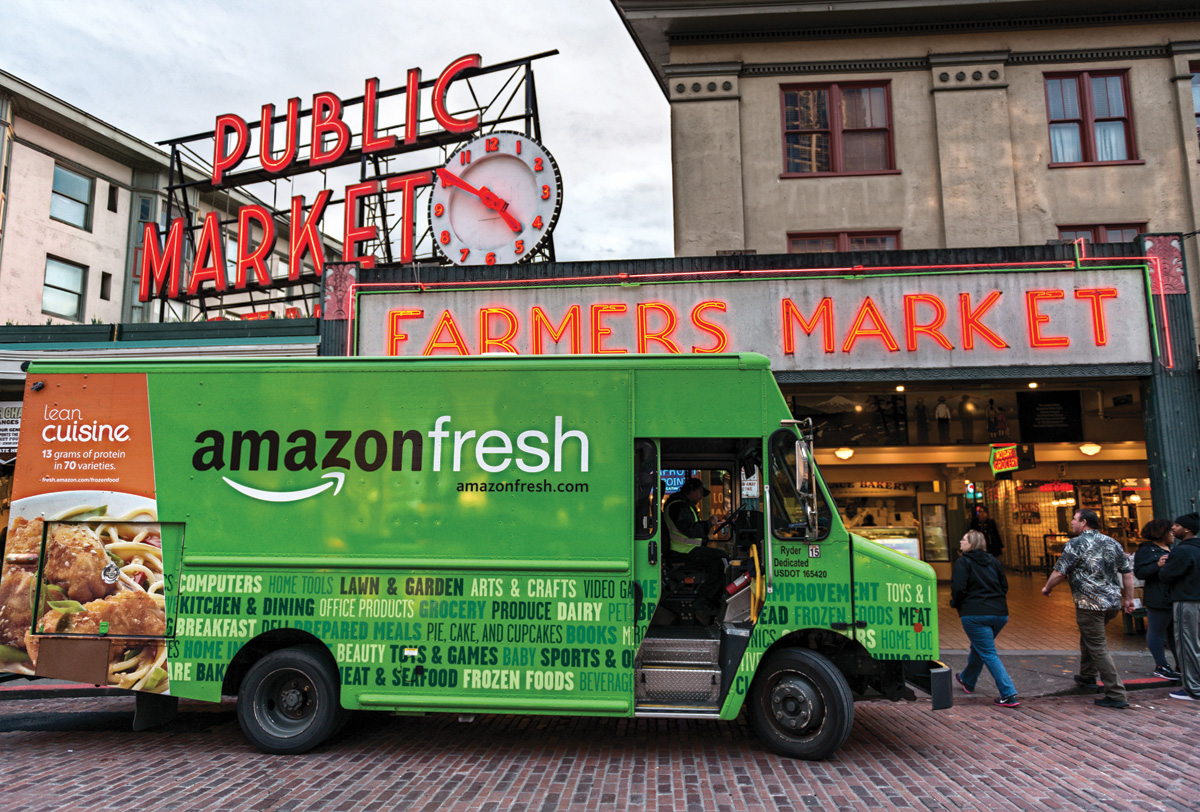Amazon is no stranger to the food industry. The e-commerce site broke into the retail space when it acquired Whole Foods in July 2017 and has continued to develop other ways to grow its footprint in the retail industry.
This past fall, reports surfaced that the online retailer could open some 3,000 cashierless stores by 2021, per a Bloomberg report.
Amazon has not commented openly about the plan.
New research from RBC Capital Markets now shows that if Amazon opens the projected number of futuristic shops by 2021, the company could generate close to $4.5 billion in sales a year.
According to Recode, the analysts considered the typical order of a AmazonGo store is about $10. The analysts considered the average number of visitors—an average of 550 a day—“which would mean the average Go store generates an estimated $1.5 million in revenue a year excluding days when current Amazon Go stores are closed,” per Recode.
The first AmazonGo store opened in 2016 in Seattle, Washington. A mix between a convenience store and quick-serv food spot, the cashierless stores allow customers to grab items off the shelf and are automatically charged. The innovative store models “bring in about 50 percent more revenue on average than typical convenience stores, according to new estimates from RBC Capital Markets analysts,” reported Recode.
A new store in Chicago and two more locations in Seattle offer customers the option to grab sandwiches, salads, and snacks along with other offerings—like beer and packaged groceries—one might find at convenience stores. Not all locations have the same product lineup leaving room for Amazon to experiment with offerings as new stores are opened. Recode compares the grab-and-go potential for AmazonGo stores to quick-serv Pret a Manger, which specializes in sandwiches, salads, and other food on the go. Pret a Manger made around $1.1 billion in sales across 444 stores in 2016, according to Recode.
While the potential for the business is massive, Amazon will need to invest more than what a regular convenience store would normally cost. Amazon spent more than $1 million on hardware alone in the first AmazonGo store. Morgan Stanley estimates Amazon would need to spend between $500 million to $3 billion to open all 3,000 stores. Amazon’s need to invest in in-store automation technologies, cameras, and sensors would likely push the price to the higher end, the analysts, led by Brian Nowak, said, adding that Amazon had $200 billion in total 2018 retail operating expenses.
For some perspective on where this growth would slot Amazon’s model, 3,000 restaurants would place it at No. 16 in the QSR 50 (in regards to U.S. locations), right behind Papa John’s (3,314 locations end of 2017) and in front of Jimmy John’s (2,755 restaurants). See where the rest of the industry ranks.








